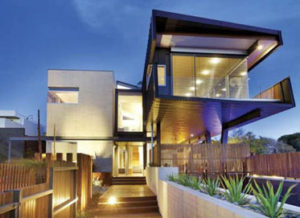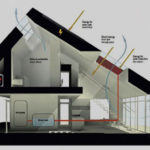 Have you noticed that when an air conditioner is turned on, energy consumption is quickly increased.
Have you noticed that when an air conditioner is turned on, energy consumption is quickly increased.
Frightening, isn’t it?
So, that means, if you’re thinking of looking for the most cost efficient air conditioning design for your home, and since every home is different, this whole process may appear a little daunting.
But with these five tips, you will have the facts you need to make an informed decision.
1. Choose a System With Zone Controls and Enjoy Temperature Choices in Any Room:
Many modern air conditioners have zone controls and are valuable tools to save energy without compromising comfort levels.
Zone controls can be modified to suit your particular house design. You accomplish this by dividing your home into rooms, areas or zones. And each zone can be controlled separately to allow you greater flexibility. You can choose to cool different areas of your South East Queensland home to different temperatures or turn off the air conditioning in rooms that are not being used.
For example, cooling your bedrooms can be a waste of energy during the day as they are not likely to be in use. With zone controls, you can cool the bedrooms to your preferred sleeping temperature before you go to bed at the same time as you enjoy a cooler temperature in your living areas.
2. Look for Multi-Function Air Conditioning Timers:
While basic systems are likely to have a timer function, this may not be the way to save energy. Multi-function timers have a number of on and off slots to allow you to perfectly tailor your system to suit your specific needs.
For example:
You can set a timer to start cooling your living areas before you wake up in the morning. That way you experience the perfect temperature when you are up and about. A really big benefit is your timer can automatically turn on before you are due home from work, so you don’t waste energy running your system all day. A multi function timer allows you to set a schedule according to your typical habits.
You can even program in different settings for days when you like to enjoy a lie-in and a leisurely morning in bed on the weekends. The best part is you can keep the bedrooms cool while not wasting energy cooling the living areas.
3. Look for Mobile Device Compatibility and Make It Easy To Set and Forget:
Many modern systems also benefit from Wi-Fi integration and compatibility with smartphones or mobile devices. This innovative feature allows you to control your system remotely, even if you are not at home. Some systems have a corresponding app, or you can log into your system remotely, allowing you to turn the system on and off or change temperatures. This can be very useful if you don’t always follow a set schedule.
While you can set a timer to cool down the house before you return home, if your work schedule is flexible, you may find that some days you are home earlier or later than expected. However, with mobile device compatibility, you can remotely turn on the air on your way home.
If you are forgetful, you can also set reminders on your device, so you can check you remembered to turn off the air conditioners before you left the house.
4. Consider Airflow:
Your system design should also examine how air will flow throughout your home. Some systems require natural ventilation to keep humidity levels low. This means that you will need a window, door or vent open for each air conditioner unit. Without any form of ventilation, it’s possible for allergens and other airborne contaminants such as dust and debris to compromise your air quality.
If the air is continually cycled through the system without ventilation it can become stale, further compromising air quality. You will need to consider airflow in your design and how fresh air can be introduced. Some systems use duct work to transport the conditioned air and provide ventilation. However, there are natural alternatives if this is not viable.
5. Check the Air Conditioning Unit Capacity:
Finally, you need to consider the capacity of your chosen unit. Although it may be tempting to go with the old saying,“bigger is better”. With air conditioning this can be a costly mistake.
A unit that is too large for your requirements will not only cost you more initially but will actually use more energy. If your system is not properly sized, it can reduce the lifespan of the equipment and use more energy to maintain your desired temperature. In order to achieve maximum energy efficiency, your new system needs to be tailored to your house design.
Therefore, if you are considering having any air conditioners installed, it’s a good idea to seek professional advice. If you’d like more useful information on how you can have efficient South East Queensland home air conditioning designs,
Give us a call on…
0416 297 649
And we’ll put time aside to discuss your needs.
Look forward to your call.
Travis Heslin
Coolvent Consultants
Independent Air Conditioning Design & Advice

